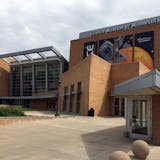I'm writing in praise of an essential, humble place: Central Avenue, a glorious display of lumberyards, used-tire dealers and as eclectic a group of shops as you'll find in the Twin Cities.
The avenue heads north from the Mississippi River at St. Anthony Falls, a spot taken from its original Dakota and Ojibwa residents. From there Central Avenue trudges, without ceremony, through nine of the Minneapolis' bustling neighborhoods to the sod farms and self-storage units of Anoka County, where it widens into a hodgepodge-lined, four-lane highway that must have half of the region's SuperAmerica stations.
Central Avenue is, in its own amazing way, one of our more important thoroughfares because it's a tightly focused version of an immigration story that's been playing out for decades here and across the country.
About 140 years ago, Central Avenue and the scruffy side streets of northeast Minneapolis were home to Poles, Germans, Slovaks, Finns, Lebanese, Russians and Ukrainians. The falls had been harnessed and there were jobs at the mills. These new Americans helped make the city. They built homes, churches and schools, and made the young city safe for kielbasa, bierwurst, kulen and kishka.
Those families, with their urgent immigrants' energy, found themselves eventually peering north up Central Avenue, where they glimpsed something enticing above Broadway — the road to Columbia Heights. By 1924, so many Poles (along with Germans and Irish) had taken Central Avenue from Northeast past the city limits that the local archdiocese had enough congregants to justify construction of the Immaculate Conception Church.
That exodus marked the beginning of almost 100 years of progressive waves of immigrants who arrived on Central Avenue, built lives, and then, in many cases, got on Central Avenue to head north. What started as Eastern Europeans launching themselves as new Americans into the suburbs became a steady stream of Somalis, Hmong and Liberians in the past 20 years.
The move continues
Northwest of Columbia Heights lies Brooklyn Park, the icon of immigration's suburban transformation. In 1990, Brooklyn Park was 10 percent nonwhite. Fifteen years later, more than half of the city was neither Norse nor in any way European, as successive waves of Africans, Asians and Latinos moved there from northeast Minneapolis — only to be replaced in Central Avenue's high-rises and duplexes in the city by another wave of their newly arriving cousins and compatriots.
What's playing out on Central Avenue, a street that shows up for work every day, is happening across the country. People come to America, it seems, land in cities and then look for the nearest through-street to the suburbs.


